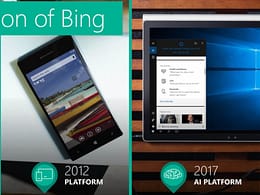Top 10 Questions Digital Marketing Professionals should ask the Clients
Are you are working as Marketing head or manager of a digital Marketing agency? If yes, then you be facing the day today challenge of winning the business deal, Here we have listed the Top 10 Questions to ask client on first meeting.
As peculiar as it might sound, few out of every odd web marketing advertiser are centered around their customer’s needs. Generally, they focus around web marketing “results” alone. In doing as such, they do the superficially successful campaign and forgetting the core objective of the Digital marketing campaign.
So, In order to align the digital marketing with a company’s core principles and strengths, it’s important for us to get some deeper client knowledge before going full-steam into the campaign strategy & execution.
The questions below are the top 10 Questions to ask client on first meeting to ensure that we move in the right direction with keywords, content and–most important–site messaging. It ensures that we develop the highest quality content that is a match for visitor intent and expectations
Top Questions to ask client on first meeting Listed Below
1. Describe your target audience?
This Question will help you in having an understanding of their potential customers. This information is crucial for crafting effective digital marketing strategies. Here are key points you should be looking for in their answer.
- Demographics: Inquire about the basic characteristics of their target audience, including age, gender, location, marital status, education level, income range, and occupation. These details will help you create targeted and relevant content.
- Psychographics: Understand the target audience’s psychological and lifestyle attributes. This includes their interests, hobbies, values, beliefs, attitudes, behaviors, and motivations. These insights can guide the tone and messaging of your marketing materials.
- Needs and Pain Points: Learn about the specific needs, challenges, and pain points that the target audience is experiencing. This will help you tailor your marketing messages to address these issues and position the product or service as a solution.
- Buying Behavior: Gain insights into how the target audience makes purchasing decisions. Do they research extensively before buying? Are they influenced by reviews and testimonials? Do they prefer online shopping or offline retail? Understanding their buying behavior will help you design effective conversion strategies.
- Customer Journey: Map out the typical customer journey from awareness to conversion. Understand the touchpoints where potential customers interact with the brand, such as social media, websites, emails, and advertisements. This will guide your marketing efforts across various channels.
- Competitor Analysis: Ask about who their main competitors are and how they differentiate themselves from these competitors. Understanding the competitive landscape can help you identify unique selling points and areas for differentiation.
- Communication Preferences: Determine the preferred communication channels of the target audience. Do they spend more time on social media platforms, search engines, email, or other online platforms? This information will guide your distribution strategies.
- Goals and Objectives: Understand the goals and objectives of the client in relation to their target audience. Are they aiming for brand awareness, lead generation, increased sales, or something else? Align your strategies with their objectives.
- Feedback and Data: If possible, ask if they have any existing customer feedback, data, or analytics. This can provide valuable insights into customer behavior, preferences, and pain points.
- Segmentation: Inquire about any audience segmentation they’ve done. Some businesses may have multiple target segments with distinct characteristics. Understanding these segments can help you tailor your marketing efforts more precisely.
Remember, the more detailed and specific the information you gather, the better you’ll be able to design a digital marketing strategy that resonates with the target audience and drives results for your client.
2. What are your corporate core values, and how do you express them to your customers?
By Asking this question you are you’re aiming to gain insights into their brand identity, messaging strategy, and overall approach to customer engagement. Here’s what you should be looking for in their answer:
- Alignment with Brand Identity: Look for core values that align closely with the company’s overall brand identity and mission. Their values should reflect what the company stands for and guide their actions and decisions.
- Consistency: Ensure that their core values are consistently communicated across different touchpoints and channels. Consistency in messaging helps build a strong brand image and fosters trust among customers.
- Customer-Centric Approach: The client’s response should demonstrate a focus on delivering value to their customers. They should be able to articulate how their core values translate into customer-centric actions, such as providing exceptional service, understanding customer needs, and addressing pain points.
- Examples of Implementation: Ask for specific examples of how they express their core values to customers through their digital marketing efforts. This could include content creation, social media engagement, personalized communications, or user experience enhancements on their website or app.
- Storytelling: An effective way to express core values is through storytelling. Listen for narratives or anecdotes that highlight how the company’s values have positively impacted customers’ lives or solved their problems.
- Transparency and Authenticity: A genuine expression of core values resonates with customers. Look for evidence that their values are authentically integrated into their marketing strategies rather than being mere buzzwords.
- Feedback and Improvement: Inquire about how they gather feedback from customers to assess the effectiveness of their core values in their marketing efforts. A commitment to continuous improvement based on customer input is a positive sign.
- Measurement and Metrics: Ask how they measure the impact of their core values on customer engagement, loyalty, and other relevant metrics. This could involve tracking social media engagement, customer reviews, repeat business, or Net Promoter Score (NPS).
- Adaptability: In the dynamic world of digital marketing, flexibility is crucial. The client’s response should indicate their ability to adapt their messaging and strategies while staying true to their core values.
- Collaboration: Look for indications that their core values extend to internal collaboration as well. A cohesive team that believes in and embodies the same values is more likely to deliver a consistent customer experience.
Remember, the way a company expresses its core values in its digital marketing efforts can significantly impact its brand perception and customer relationships. Your goal is to evaluate how effectively the client integrates their core values into their digital marketing strategy to create a compelling and authentic brand narrative.
3. What common objections do people have when they buy from you?
When you ask this question, you should be looking to get the answers in this way;
- Pricing Concerns: Clients might express objections related to the product or service’s cost, stating that it is too expensive for the perceived value. Look for insights into how the company addresses these concerns, such as pricing strategies, discounts, payment plans, or value-added benefits that justify the cost.
- Uncertainty About Value: Some potential customers might be unsure if the product or service will meet their needs or deliver the promised benefits. Seek to understand how the company tackles this objection by emphasizing key features, benefits, success stories, testimonials, or free trials that provide a clear demonstration of the value offered.
- Lack of Trust or Credibility: Clients may have doubts about the company’s credibility, quality, or reliability. Explore how the company overcomes this objection through trust-building elements, such as customer reviews, industry certifications, guarantees, warranties, transparent policies, or a strong online presence that showcases expertise and authority.
By identifying and addressing these common objections, the company’s digital marketing strategy can be tailored to effectively alleviate concerns and convert potential customers into loyal buyers.
4. How do you address those objections and convert prospects into satisfied buyers?
When asking about addressing objections and converting prospects into satisfied buyers in a Digital Marketing project, you should be looking for the following top points in the answer:
Overall, the answer should showcase a well-rounded approach that combines understanding the customer, providing valuable information, and fostering ongoing engagement to effectively address objections and convert prospects into satisfied buyers in the context of a digital marketing project.
5. What information do your customers need in order to make an informed buying decision?
When asking about the information customers need to make an informed buying decision during a client meeting for a Digital Marketing project, you should be looking for the following five key points:
- Product/Service Details: Customers need comprehensive and accurate information about the product or service, including features, specifications, benefits, and any unique selling points that set it apart from competitors.
- Pricing and Value: Understanding the pricing structure, available pricing plans, discounts, and perceived value of the product or service help customers assess whether it aligns with their budget and expectations.
- Reviews and Testimonials: Customers often seek social proof in the form of reviews, testimonials, case studies, or user-generated content. Positive experiences shared by others can influence their decision-making process.
- Comparisons and Alternatives: Customers may want to compare your offering with similar products or services in the market. Providing a clear comparison that highlights your strengths and addresses potential weaknesses can be crucial.
- Return and Refund Policies: Information about return, refund, and warranty policies can instill confidence in customers, knowing they have a safety net in case the product or service doesn’t meet their expectations.
These points will help you gauge the level of transparency, clarity, and customer-centric focus in the client’s marketing strategy and identify areas where improvements or adjustments might be necessary to enhance the overall customer experience.
6. Who are your major competitors, and what do you feel are their stronger points over yours?
When asking about major competitors and their strengths in a client meeting for a Digital Marketing project, you should be looking for insights that can help you develop a more effective marketing strategy. Here are two top points you should be attentive to in their answer:
Key Competitors: Identify the client’s main competitors in their industry. This will give you an understanding of the competitive landscape and help you tailor your digital marketing efforts to stand out. Look for a clear list of competitors, as this demonstrates that the client is aware of who they are up against in the market.
Competitor Strengths: Pay attention to what the client perceives as their competitors’ stronger points. This insight can reveal gaps in your client’s current strategy and opportunities for improvement. Look for specific strengths mentioned, such as superior product features, better customer service, or more effective branding. This information can guide your marketing approach by highlighting areas where your client needs to differentiate and compete effectively.
Ultimately, the goal is to gather competitive intelligence that will allow you to craft a digital marketing plan that capitalizes on your client’s strengths while addressing their competitors’ advantages.
7. What problems does your product or service solve?
When you ask the question, “What problems does your product or service solve?” during a client meeting for a Digital Marketing project, you should be looking for:
- Clear Identification of Pain Points: The client’s answer should provide a clear and concise explanation of the specific pain points or challenges that their product or service addresses. This could involve issues their target audience faces, inefficiencies in existing solutions, or unmet needs in the market. The more specific and detailed they are in identifying these problems, the better you’ll understand the context of your digital marketing efforts.
- Value Proposition and Unique Selling Points: In addition to highlighting problems, the client’s response should also highlight how their product or service uniquely solves those problems. They should articulate the key features, benefits, and value that their offering brings to customers. This information will help you tailor your digital marketing strategies to emphasize these unique selling points and communicate the value proposition effectively to the target audience.
By focusing on these two key points in the client’s answer, you’ll gain insights into the core issues their product or service addresses and how your digital marketing efforts can effectively address those pain points while highlighting the product’s strengths.
8. What sales approaches have worked in the past?
When you ask about sales approaches that have worked in the past during a client meeting for a Digital Marketing project, you can expect to receive valuable insights that will help you tailor your digital marketing campaign to maximize its effectiveness. Here are three top points you might expect in the reply:
- Customer Persona and Segmentation: The client may share information about the types of customers or target audience segments that have shown the most interest and converted into sales in the past. This could include demographic data (age, gender, location), psychographic information (interests, behaviors, values), and pain points that the successful customers had. Understanding these details will help you refine your digital marketing efforts to specifically target and resonate with these segments.
- Effective Channels and Content: The client may provide insights into which digital marketing channels and content formats have yielded the best results. They might share whether social media advertising, email campaigns, influencer partnerships, or other strategies have been particularly successful. Additionally, they may highlight the types of content (e.g., educational blog posts, engaging videos, interactive quizzes) that have resonated with their audience and driven conversions. This information can guide your campaign’s channel selection and content creation. For Example a startup company solely depending upon SEO. Here are some good insight about What Kind of Organization might not be interested in SEO?
- Value Proposition and Messaging: Clients who have experienced sales success in the past will likely emphasize the value proposition and messaging strategies that played a crucial role. They may provide details about key selling points, unique features, or competitive advantages that have resonated with customers and influenced their purchasing decisions. Understanding these elements will enable you to craft compelling and persuasive digital marketing messages that align with what has proven effective.
By gaining insights into these top points, you’ll be better equipped to design a targeted, engaging, and persuasive digital marketing campaign that builds upon the client’s past successes and drives meaningful results.
9. When and What hasn’t worked?
When you ask about what hasn’t worked in your client’s past marketing activities, you can expect to gain valuable insights that will help you shape a more effective digital marketing campaign. Here are four top points you should expect in their reply:
Specific Failed Strategies or Tactics: Your client might highlight certain strategies, tactics, or campaigns that didn’t yield the desired results. These could include unsuccessful social media campaigns, poorly performing ad sets, or ineffective email marketing efforts.
Reasons for Failure: Understanding why certain strategies didn’t work is crucial. Your client might provide insights into factors such as poor targeting, mismatched messaging, inadequate budget allocation, or a lack of alignment with their target audience’s preferences.
Performance Metrics and KPIs: Your client may share data on key performance indicators (KPIs) that fell short of expectations. This could involve metrics like click-through rates, conversion rates, engagement levels, or return on investment (ROI).
Audience Feedback and Insights: Your client might offer insights they’ve gathered from customer feedback, surveys, or focus groups. Understanding how their audience responded to previous marketing efforts can help you avoid similar pitfalls and tailor your new campaign more effectively.
- Customer-Centric Approach: The answer should emphasize the importance of understanding the specific objections and concerns of prospects. Look for a focus on creating tailored solutions and personalized communication that directly address these objections. The response should highlight the ability to empathize with the prospect’s needs and provide relevant information to alleviate their concerns.
- Clear Communication and Information: The answer should mention the use of clear, concise, and compelling communication techniques. Effective digital marketing involves providing comprehensive information about the product or service, highlighting its features and benefits, and demonstrating how it addresses the prospect’s pain points. Look for a strategy that includes various content formats, such as engaging website copy, informative videos, case studies, and customer testimonials.
- Engagement and Relationship Building: A successful response will emphasize the importance of building and nurturing relationships with prospects over time. Look for a mention of tactics like lead nurturing emails, social media engagement, and retargeting ads that keep prospects engaged and informed throughout their buyer journey. The answer should also highlight the significance of timely follow-ups and maintaining consistent communication to establish trust and credibility.
By listening attentively to your client’s feedback on what hasn’t worked in their past marketing activities, you can identify areas of improvement and develop a more strategic and tailored digital marketing campaign that addresses these challenges and delivers better results.
10. What tone and feel best resonates with your customers?
When you ask the client about the tone and feel that resonates best with their customers for a Digital Marketing project, you can expect the following types of information that will aid in creating a more effective campaign:
Audience Insights and Demographics: The client may provide details about their target audience’s demographics, preferences, and behaviors. This can include information such as age, gender, location, interests, and online behavior. Understanding the audience’s characteristics will help you tailor the campaign’s tone and feel to match their preferences, ensuring your content resonates with them.
Brand Personality and Values: Clients might share insights about their brand’s personality, values, and mission. This information helps you align the campaign’s tone and messaging with the brand’s identity. For instance, if the brand values sustainability and eco-friendliness, the tone could be environmentally conscious and the feel could incorporate natural elements.
Emotional Triggers and Pain Points: Clients may reveal the emotional triggers and pain points of their customers. Understanding what motivates their audience and the challenges they face allows you to craft messaging that speaks directly to these aspects. By addressing customer concerns and aspirations, your digital marketing campaign can generate stronger connections and engagement.
Ultimately, the client’s response should guide you in creating content that not only resonates with the target audience but also aligns with the brand’s identity and addresses customer needs effectively. This information will enable you to develop a well-rounded digital marketing campaign that speaks directly to the hearts and minds of the customers you’re trying to reach.
What Should be the Important Marketing KPI’s to Keep in Mind?
Read about the Important Marketing KPI’s













Wonderful! I have just entered the digital Marketing domain and so thankful for this Questionnaire for client consultation and deciding the scope of work! Thank you, Jayant!